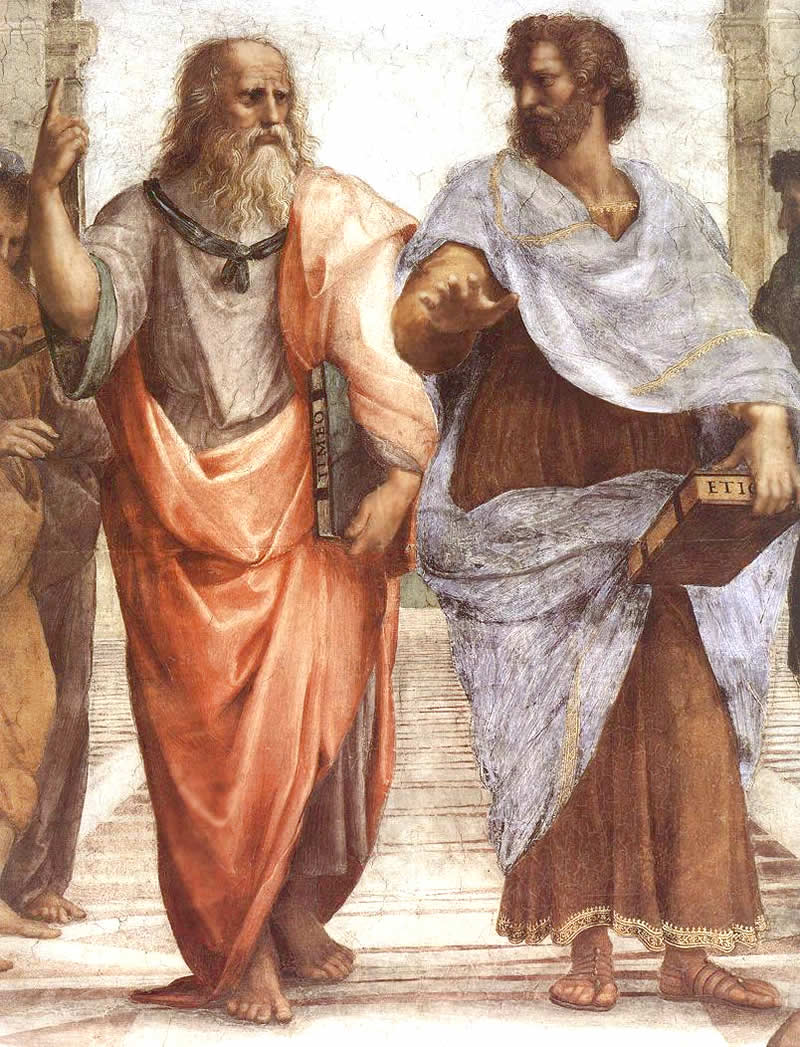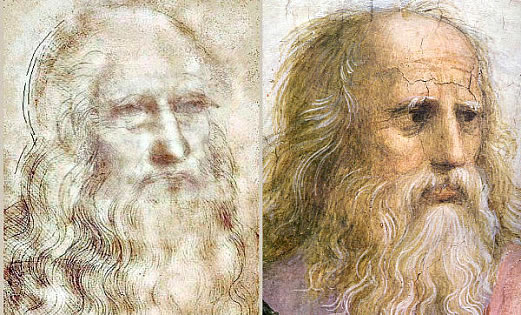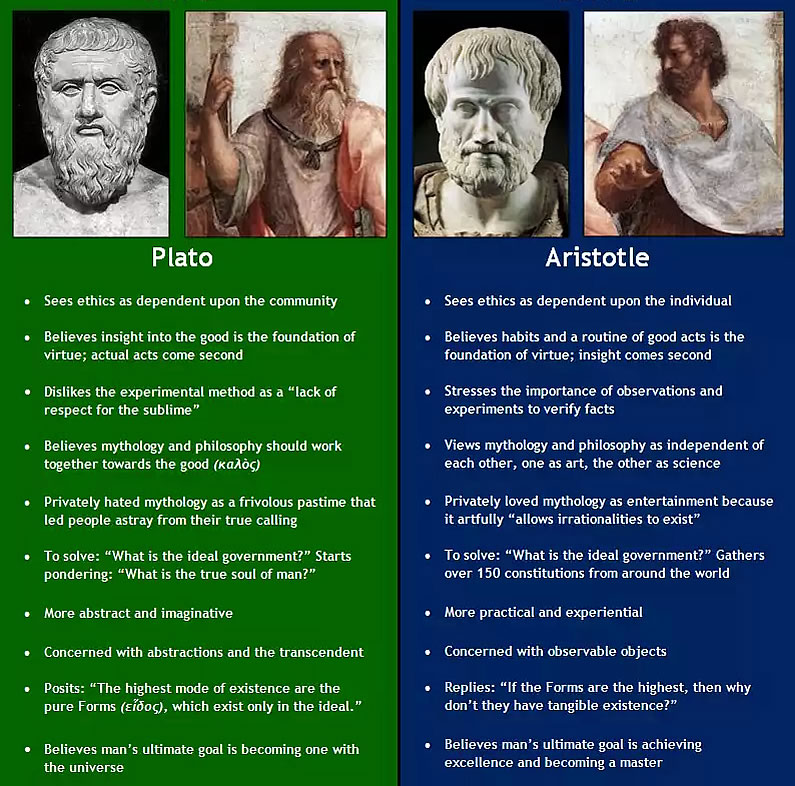| Raphael's
Masterpieces |
|
School
of Athens-Plato and Aristotle |
||
|
Who
is Plato and Aristotle? |
This
is the young Leonardo da Vinci selfportrait? |
Plato
and Aristotle Quotes |
| |
|
Raphael
Santi |
| The protagonists - Plato, represented with a white beard (some people identify this solemn old man with Leonardo da Vinci) and Aristotle - are both characterized by a precise and meaningful pose. Raphael's descriptive capacity, in contrast to that visible in the allegories of earlier painters, is such that the figures do not pay homage to, or group around the symbols of knowledge; they do not form a parade. They move, act, teach, discuss and become excited. Plato and Aristotle are discussing the respective merits of Idealism vs. Realism. Plato holds his book, Timaeus, one of the few works by Plato that had been recovered by the Renaissance, while explaining how the universe was created by the demiurge from perfect mathematical models, forms and the regular geometric solids. With his right hand Plato gestures upwards, indicating that the eternal forms, such as the ideals of Beauty, Goodness and Truth, are not in or of this world, but beyond, in a timeless realm of pure Ideas. |
| |
 Plato, marble portrait bust from an original of the 4th century bce. Capitoline Museums |
Plato Plato, (born 428/427 bce, Athens, Greece—died 348/347, Athens) ancient Greek philosopher, student of Socrates (c. 470–399 bce), teacher of Aristotle (384–322 bce), and founder of the Academy, best known as the author of philosophical works of unparalleled influence. Building on the demonstration by Socrates that those regarded as experts in ethical matters did not have the understanding necessary for a good human life, Plato introduced the idea that their mistakes were due to their not engaging properly with a class of entities he called forms, chief examples of which were Justice, Beauty, and Equality. Whereas other thinkers—and Plato himself in certain passages—used the term without any precise technical force, Plato in the course of his career came to devote specialized attention to these entities. As
he conceived them, they were accessible not to the senses but to
the mind alone, and they were the most important constituents of
reality, underlying the existence of the sensible world and giving
it what intelligibility it has. In metaphysics Plato envisioned
a systematic, rational treatment of the forms and their interrelations,
starting with the most fundamental among them (the Good, or the
One); in ethics and moral psychology he developed the view that
the good life requires not just a certain kind of knowledge (as
Socrates had suggested) but also habituation to healthy emotional
responses and therefore harmony between the three parts of the soul
(according to Plato, reason, spirit, and appetite). His works also
contain discussions in aesthetics, political philosophy, theology,
cosmology, epistemology, and the philosophy of language. His school
fostered research not just in philosophy narrowly conceived but
in a wide range of endeavours that today would be called mathematical
or scientific. |
Aristotle Aristotle,
Greek Aristoteles (born 384 bce, Stagira, Chalcidice, Greece—died
322, Chalcis, Euboea) Aristotle’s intellectual range was vast, covering most of the sciences and many of the arts, including biology, botany, chemistry, ethics, history, logic, metaphysics, rhetoric, philosophy of mind, philosophy of science, physics, poetics, political theory, psychology, and zoology. He was the founder of formal logic, devising for it a finished system that for centuries was regarded as the sum of the discipline; and he pioneered the study of zoology, both observational and theoretical, in which some of his work remained unsurpassed until the 19th century. But
he is, of course, most outstanding as a philosopher. His writings
in ethics and political theory as well as in metaphysics and the
philosophy of science continue to be studied, and his work remains
a powerful current in contemporary philosophical debate. |
 Aristotle, marble portrait bust, Roman copy (2nd century bc) of a Greek original |
|
||||||||
|
||||||||
|
||||||||
Plato
and Aristotle Quotes |
||||||||
|
||||||||
|
||||||||
|
||||||||
|
||||||||




